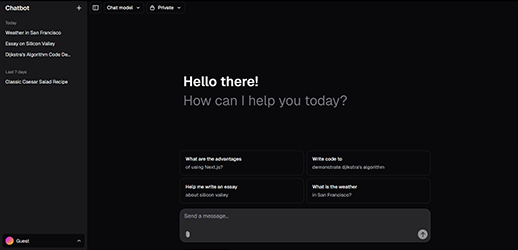What is Chat GPT?
⌃
ChatGPT is an AI-powered assistant that can understand and generate human-like text, helping with questions, writing, coding, learning, and more.
Do I need to register to use ChatGPT?
⌃
No, you can start chatting instantly.Some advanced features may require sign-up in the future.
Is ChatGPT.org free?
⌃
Yes, the basic version is free to use.Premium features (like faster responses or advanced models) may be available later.
Can ChatGPT understand any language?
⌃
The platform operates best in English but it also supports multiple languages including Spanish, French, German, Russian and many more.
Is ChatGPT safe to use?
⌃
Yes, ChatGPT is designed with safety in mind.However, always double-check critical information like medical, legal, or financial advice.
Can I use ChatGPT for work or study?
⌃
Absolutely!ChatGPT provides assistance with email drafting and article summarization and concept explanation and code generation and study note production.
Does ChatGPT remember my past conversations?
⌃
ChatGPT remembers context during your session but does not store your chats permanently unless you use an account with history features.
